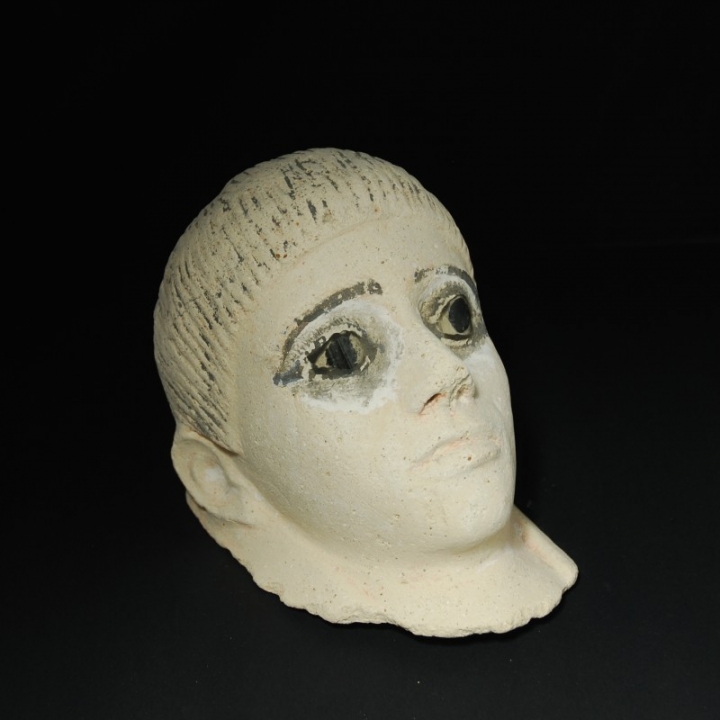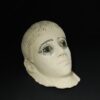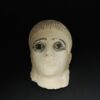Stucco Mummy Portrait Mask
Culture: Egyptian
Period: 2nd century A.D.
Material: Stucco, Glass, Obsidian
Dimensions: 22 cm long
Price: Sold
Ref: 1031
Provenance: Sothebys Antiquities Sale, 10. July 1979, Lot 140. After that private collection Sweden, acquired in the 1970s in Stockholm from the Swedish collector Karl Andersson. Excavated in Egypt in 1903 according to the underside of the mask with a collection note inscribed: 'Graeco-Roman portrait mask found at Tuneh Egypt. See Mr Griffith's report 1903'. Tuna el Gebel is Hermopolis Magna, where a vast number of stucco mummy masks have been found.
Condition: Remains of dark polychrome pigments around the eyes, on the eyebrows and hair. Rose paint residues can especially be seen on the lips. On the back of the head chipped, which does not harm the overall impression at all.
Description: Belonging to the last period of the Egyptian culture are the stucco (plaster) mummy masks formed in a mixed Roman-Egyptian style. Our model impresses with its original glass eyes with obsidian inlays.
For reference: After Egypt’s conquest by the Romans (30 B.C.) the latter maintained the ancient Egyptian death traditions, e.g. mummification of the deceased and the detailing of their heads. Whereas in Fayum and Lower Egypt the so called mummy portraits (fayum portraits), painted panels depicting the deceased, soon replaced the traditional cardboard masks, the sculptural stucco masks remained in use in Middle Egypt. Around 1 200 plaster masks from the Roman imperial period are known today. The masks were produced in standard forms and afterwards diligently reworked. Particular attention was paid to the part of the anatomically formed and painted eyes. Since the time of the emperor Hadrian the eyes were formed with transparent, cut to shape glass layers or with glass paste – like in our model.





